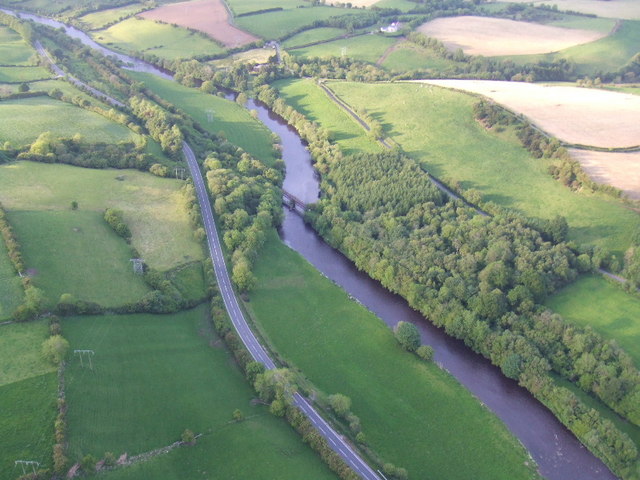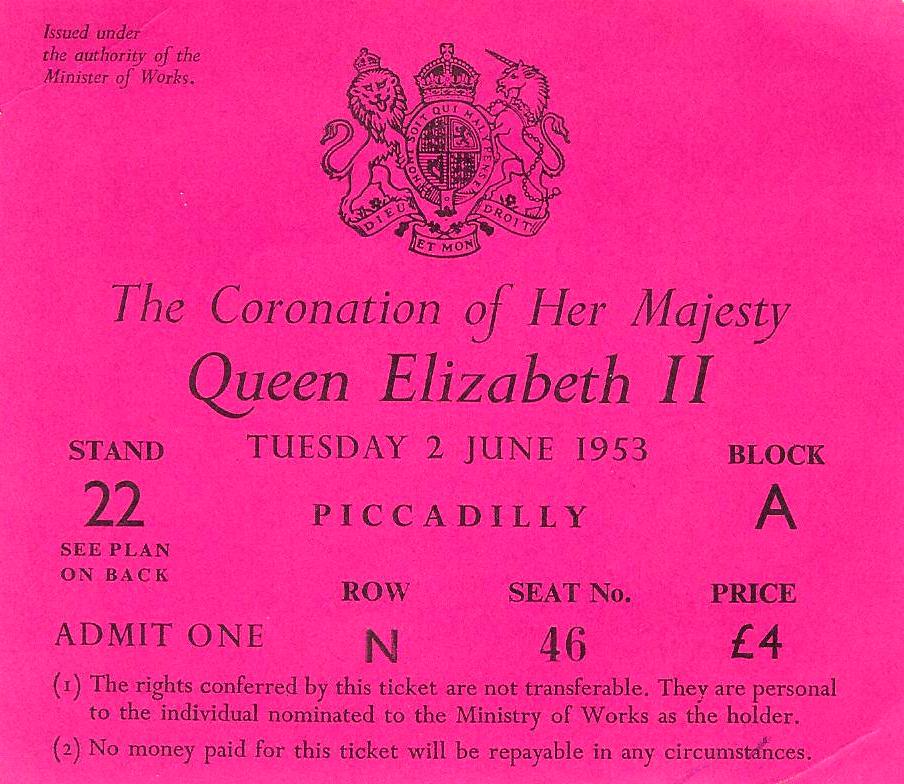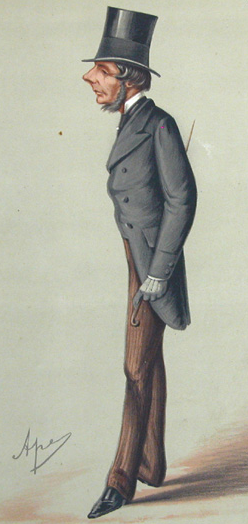|
James Hamilton, 4th Duke Of Abercorn
James Edward Hamilton, 4th Duke of Abercorn (29 February 1904 – 4 June 1979), styled Viscount Strabane until 1913 and Marquess of Hamilton between 1913 and 1953, was a British peer. Early life and education Abercorn was born in 1904 at 15 Montagu Square, London, the son of James Hamilton, 3rd Duke of Abercorn, and Lady Rosalind Cecilia Caroline Bingham. He inherited his father's peerages on 12 September 1953. He was educated at Eton and Royal Military College, Sandhurst. Career After Sandhurst, Lord Hamilton was commissioned into the Grenadier Guards, where he rose to the rank of captain. In 1946, he was elected to the County Council of County Tyrone, served as High Sheriff of Tyrone, and then served in the Senate of Northern Ireland. He became Lord Lieutenant of County Tyrone on his father's death, a position he held for the remainder of his life. He was appointed honorary colonel of the 5th Battalion, Royal Inniskilling Fusiliers (a Territorial Army unit), and died at ... [...More Info...] [...Related Items...] OR: [Wikipedia] [Google] [Baidu] |
His Grace
His Grace and Her Grace are English Style (manner of address), styles of address used with high-ranking personages, and was the style for English monarchs until Henry VIII (r. 1509–1547), and for Scottish monarchs until the Act of Union (1707), Act of Union of 1707, which Union of the Crowns, united the Kingdom of Scotland and the Kingdom of England. In Great Britain and Ireland, it is also the style of address for archbishops, dukes, and duchesses; e.g. His Grace the Duke of Norfolk and His Grace the Lord Archbishop of Canterbury. The correct style is “Your Grace” in spoken and written form; as a stylistic descriptor for Dukes in the United Kingdom, British dukes, it is an abbreviation of the full, formal style: “The Most High, Noble and Potent Prince His Grace”. However, a Royal dukedoms in the United Kingdom, royal duke, such as Prince Edward, Duke of Kent, is addressed as Your Royal Highness. Ecclesiastical usage Christianity The style "His Grace" and "Your Grace" ... [...More Info...] [...Related Items...] OR: [Wikipedia] [Google] [Baidu] |
County Tyrone
County Tyrone (; ) is one of the six counties of Northern Ireland, one of the nine counties of Ulster and one of the thirty-two traditional counties of Ireland. Its county town is Omagh. Adjoined to the south-west shore of Lough Neagh, the county covers an area of , making it the largest of Northern Ireland's six counties by size, and the second largest county in Ulster after Donegal. With a population of 188,383 as of the 2021 census, Tyrone is the 5th most populous county in both Northern Ireland and Ulster, and the 11th most populous county on the island of Ireland. The county derives its name and general geographic location from Tír Eoghain, a Gaelic kingdom under the O'Neill dynasty which existed until the 17th century. Name The name ''Tyrone'' is derived from the Irish , meaning 'land of Eoghan', the name given to the conquests made by the from the provinces of and Ulaid. Historically, it was anglicised as ''Tirowen'' or ''Tyrowen'', which are closer to the Irish ... [...More Info...] [...Related Items...] OR: [Wikipedia] [Google] [Baidu] |
Coronation Of Elizabeth II
The Coronation of the British monarch, coronation of Elizabeth II as queen of the United Kingdom and the other Commonwealth realms took place on 2 June 1953 at Westminster Abbey in London. Elizabeth acceded to the throne at the age of 25 upon the death of her father, George VI, on 6 February 1952, being Proclamation of accession of Elizabeth II, proclaimed queen by her privy and executive councils shortly afterwards. The coronation was held more than one year later because of the tradition of allowing an appropriate length of time to pass after a monarch dies. It also gave the planning committees adequate time to make preparations for the ceremony. During the service, Elizabeth took an Oath of office, oath, was anointed with Chrism, holy oil, was invested with robes and Crown Jewels of the United Kingdom, regalia, and was crowned Queen of the United Kingdom, Canada, Australia, New Zealand, Union of South Africa, South Africa, Dominion of Pakistan, Pakistan, and Dominion of Ceylon, ... [...More Info...] [...Related Items...] OR: [Wikipedia] [Google] [Baidu] |
Lady Moyra Campbell
Lady Moyra Kathleen Campbell-Grove (''née'' Hamilton; 22 July 1930 – 8 November 2020) was a British aristocrat and courtier who served as a maid of honour at the coronation of Elizabeth II. Early life and family Lady Moyra Hamilton was born on 22 July 1930 in London. She was the eldest child of James Hamilton, Marquess of Hamilton, later 4th Duke of Abercorn, and The Hon. Kathleen Crichton. Her father was the son and heir of James Hamilton, 3rd Duke of Abercorn, and Lady Rosalind Bingham. Her mother was the daughter of Viscount Crichton (himself the son of John Crichton, 4th Earl Erne) and Lady Mary Grosvenor (herself the daughter of Hugh Grosvenor, 1st Duke of Westminster). She was raised at Baronscourt, the Abercorn's seat in County Tyrone. She was a first cousin of John Spencer, 8th Earl Spencer, father of Diana, Princess of Wales. As a child, she was a member of 1st Buckingham Palace Company of Girl Guides which was formed in 1937 for Princess Elizabeth. She was e ... [...More Info...] [...Related Items...] OR: [Wikipedia] [Google] [Baidu] |
Hugh Grosvenor, 1st Duke Of Westminster
Hugh Lupus Grosvenor, 1st Duke of Westminster, (13 October 1825 – 22 December 1899), styled Viscount Belgrave between 1831 and 1845, Earl Grosvenor between 1845 and 1869, and known as The Marquess of Westminster between 1869 and 1874, was an English landowner, politician and racehorse owner. He inherited the estate of Eaton Hall in Cheshire and land in Mayfair and Belgravia, London, and spent much of his fortune in developing these properties. Although he was an MP from the age of 22, and then a member of the House of Lords, his main interests were not in politics, but rather in his estates, in horse racing, and in country pursuits. He developed the stud at Eaton Hall and achieved success in racing his horses, who won the Derby on four occasions. Personal life Hugh Lupus Grosvenor was born at Eaton Hall, Cheshire, the second and eldest surviving son of Richard Grosvenor, 2nd Marquess of Westminster and Lady Elizabeth Leveson-Gower, the younger daughter of George Leves ... [...More Info...] [...Related Items...] OR: [Wikipedia] [Google] [Baidu] |
John Crichton, 5th Earl Erne
John Henry George Crichton, 5th Earl Erne (22 November 1907 – 23 May 1940), briefly styled Viscount Crichton in 1914, was an Anglo-Irish peer, soldier and politician. Early life Erne was the only son of Henry William Crichton, Viscount Crichton. His mother was Lady Mary Cavendish Grosvenor. On 31 October 1914, his father, a Major ('' brevet'' Lt. Colonel) in the Royal Horse Guards, was killed in action, aged 42, during the Great War. (He was awarded a DSO and a MVO, and is buried at Zantvoorde British Cemetery in Flanders.) Only a month later, aged seven, Erne succeeded his grandfather as the fifth Earl Erne.Kidd, Charles, Williamson, David (editors). ''Debrett's Peerage and Baronetage'' (1990 edition). New York: St Martin's Press, 1990. His mother later married Col. the Hon. Algernon Francis Stanley (a son of Frederick Stanley, 16th Earl of Derby), with whom she had one son and a daughter. His father was the eldest son, and heir apparent, of John Crichton, 4th Earl Erne ... [...More Info...] [...Related Items...] OR: [Wikipedia] [Google] [Baidu] |
John Crichton, 4th Earl Erne
John Henry Crichton, 4th Earl Erne, (16 October 1839 – 2 December 1914), styled Viscount Crichton from 1842 to 1885, was an Anglo-Irish peer and Conservative Party (UK), Conservative politician. Early life Erne was the eldest son of Selina Griselda, Countess Erne (''née'' Beresford), and John Crichton, 3rd Earl Erne. His younger siblings included Col. Hon. Charles Frederick Crichton (who married Lady Madeline Taylour, eldest daughter of Thomas Taylour, 3rd Marquess of Headfort), Lt.-Col. Hon. Sir Henry George Louis Crichton, the ''aide de camp'' to King Edward VII, and Lady Louisa Anne Catherine Crichton. His paternal grandparents were Lt.-Col. Hon. John Crichton, Governor of Hurst Castle, and the former Jane Weldon (a daughter of Walter Weldon). His father had succeeded to the earldom upon the death of his grand-uncle, Abraham Creighton, 2nd Earl Erne (MP for Lifford (Parliament of Ireland constituency), Lifford from 1790 to 1797 who was declared insane in 1798 and then inca ... [...More Info...] [...Related Items...] OR: [Wikipedia] [Google] [Baidu] |
University Of Ulster
Ulster University (; Ulster Scots: or ), legally the University of Ulster, is a multi-campus public research university located in Northern Ireland. It is often referred to informally and unofficially as Ulster, or by the abbreviation UU. It is the largest university in Northern Ireland and the second-largest university on the island of Ireland, after the federal National University of Ireland. Established in 1865 as Magee College, the college took its modern form in 1984 after the merger of the ''New University of Ulster'' established in 1968, and ''Ulster Polytechnic'', incorporating its four Northern Irish campuses under the ''University of Ulster'' banner. The university incorporated its four campuses in 1984; located in Belfast, Coleraine, Derry (Magee College), and Jordanstown. The university has branch campuses in both London and Birmingham, and an extensive distance learning provision. The university rebranded as Ulster University in October 2014, including a revised v ... [...More Info...] [...Related Items...] OR: [Wikipedia] [Google] [Baidu] |
Ulster Museum
The Ulster Museum, located in the Botanic Gardens in Belfast, has around 8,000 square metres (90,000 sq. ft.) of public display space, featuring material from the collections of fine art and applied art, archaeology, ethnography, treasures from the Spanish Armada, local history, numismatics, industrial archaeology, botany, zoology and geology. It is the largest museum in Northern Ireland, and one of the components of National Museums Northern Ireland. History The Ulster Museum was founded as the Belfast Natural History Society in 1821 and began exhibiting in 1833. It has included an art gallery since 1890. Originally called the Belfast Municipal Museum and Art Gallery, in 1929, it moved to its present location in Stranmillis. The new building was designed by James Cumming Wynne. In 1962, courtesy of the Museum Act (Northern Ireland) 1961, it was renamed as the Ulster Museum and was formally recognised as a national museum. A major extension constructed by McLaughlin ... [...More Info...] [...Related Items...] OR: [Wikipedia] [Google] [Baidu] |
Territorial Army (United Kingdom)
The Army Reserve is the active-duty volunteer reserve force of the British Army. It is separate from the Regular Reserve (United Kingdom), Regular Reserve whose members are ex-Regular personnel who retain a statutory liability for service. Descended from the Territorial Force (1908 to 1921), the Army Reserve was known as the Territorial Army (TA) from 1921 to 1967 and again from 1979 to 2014, and the Territorial and Army Volunteer Reserve (TAVR) from 1967 to 1979. The force was created in 1908 by the Secretary of State for War, Richard Haldane, 1st Viscount Haldane, Richard Haldane, when the Territorial and Reserve Forces Act 1907 combined the previously civilian-administered Volunteer Force, with the mounted Yeomanry (at the same time the Militia#United Kingdom, Militia was renamed the Special Reserve). Haldane planned a volunteer "Territorial Force", to provide a second line for the six divisions of the British Expeditionary Force (First World War), Expeditionary Force which h ... [...More Info...] [...Related Items...] OR: [Wikipedia] [Google] [Baidu] |
Royal Inniskilling Fusiliers
The Royal Inniskilling Fusiliers was an Ireland, Irish line infantry regiment of the British Army in existence from 1881 until 1968. The regiment was formed in 1881 by the amalgamation of the 27th (Inniskilling) Regiment of Foot and the 108th (Madras Infantry) Regiment of Foot, 108th Regiment of Foot. It saw service in the Second Boer War, the World War I, First World War and the World War II, Second World War. In 1968 it was amalgamated with the other regiments in the North Irish Brigade, the Royal Ulster Rifles, and the Royal Irish Fusiliers, Royal Irish Fusiliers (Princess Victoria's) into the Royal Irish Rangers. History 1881 – 1914 On 1 July 1881 the 27th (Inniskilling) Regiment of Foot and the 108th (Madras Infantry) Regiment of Foot, 108th Regiment of Foot were redesignated as the 1st and 2nd Battalions, The Royal Inniskilling Fusiliers, respectively.Frederick, pp. 259–60. In 1903 the Regiment was granted a grey hackle for their fusilier raccoon-skin hats to comm ... [...More Info...] [...Related Items...] OR: [Wikipedia] [Google] [Baidu] |




